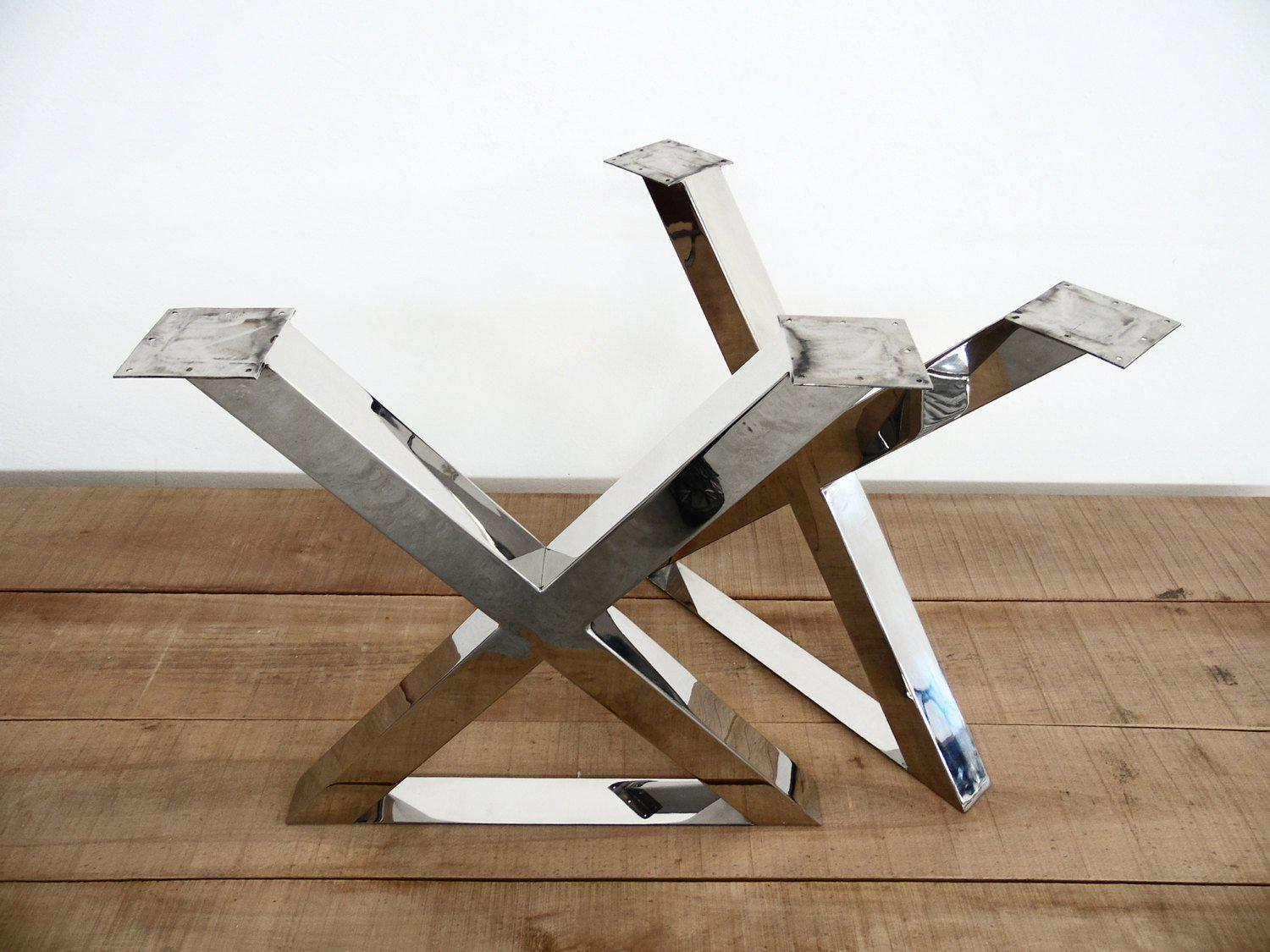A Thorough Consider Eating Table Leg Styles: Discovering the Suitable Match
Choosing the ideal table leg style is vital for both aesthetic allure and useful capability. Standard four legs use timeless style and security, while the stand base provides enhanced legroom and a modern look. For those with larger tables, trestle legs make certain tough support, whereas hairpin legs introduce a mid-century contemporary ambiance with their minimalist design. The x-shaped legs mix modern design with enhanced stability. Each of these options brings special benefits, making the selection extra than simply a matter of preference. Discover even more to uncover which design completely complements your eating room and lifestyle.
Traditional 4 Legs
Amongst the different sorts of table leg styles, the typical four-leg layout remains a classic selection for lots of families. This timeless arrangement offers an unified mix of capability and visual appeals, making it a seasonal favorite. 4 legs give balanced assistance, guaranteeing the table remains steady and capable of bearing significant weight. This is specifically beneficial for houses that regularly host big celebrations or use their table for multiple purposes, such as job or crafting.
From an aesthetic viewpoint, the conventional four-leg style can be quickly adapted to various indoor styles. Whether crafted from wood, steel, or a mix of materials, these legs can be intricately carved, streamlined and minimalistic, or anything in between. Their versatility permits them to enhance both rustic and contemporary setups perfectly.
Additionally, the simple structure of the four-leg design facilitates convenience of movement and positioning within a room. Unlike more complex bases, this style lessens obstructions, offering ample legroom for diners. In recap, the typical four-leg table leg design weds withstanding beauty with useful capability, making it a sharp choice for those looking for both form and feature in their eating furniture.
Stand Base
Frequently celebrated for its sophisticated and space-efficient design, the stand base is a recognized option to the conventional four-leg configuration in dining table leg styles. Without corner legs, diners are managed higher liberty of motion, making it an ideal selection for round and oval tables that advertise more intimate and comprehensive celebrations.
The central column itself offers a canvas for intricate layouts and creative expressions, adding a component of visual interest below the table. In recap, the pedestal base incorporates performance with style, making it a refined and functional alternative for varied eating atmospheres.
Trestle Legs
Trestle legs supply a durable and timeless foundation for eating tables, identified by their horizontal cross-bracing and tough support beams. Originating from middle ages times, this style has actually advanced yet kept its vital framework, making it a seasonal favorite in both conventional and modern settings. The central trestle beam of light, typically supported by 2 or even more vertical articles, uses exceptional security, enabling larger table browse this site lengths without the need for extra legs.
A considerable advantage of trestle leg tables is the enough legroom they provide. Unlike tables with four corner legs, the lack of blockages at the table's edges gives unimpeded space for chairs and diners, boosting comfort and access. This makes trestle tables optimal for accommodating bigger gatherings, whether in a dining space or a banquet hall.
From rustic farmhouse to sleek modern-day designs, trestle legs can be personalized to fit specific preferences. Their enduring appeal and practical advantages make trestle legs a compelling option for those looking for both style and functionality in their eating table.
Hairpin Legs

The allure of hairpin legs lies in their simplicity and convenience - dining room table legs. Available in an array of products, consisting of steel and brass, they can be ended up in countless shades to enhance different interior designs. Whether coupled with a rustic wooden tabletop or a contemporary glass surface, hairpin legs easily mix functionality with a touch of vintage appeal
Resilience is an additional noteworthy function of hairpin legs. Regardless of their fragile look, these legs are engineered to bear considerable weight, ensuring the table stays steady and secure. Additionally, they are reasonably very easy to install, making them a preferred option for do it yourself fanatics and expert furniture makers alike.
X-Shaped Legs

Constructed from products such as steel, timber, or a mix of both, X-shaped legs can be customized to match different design preferences. Steel legs typically provide a streamlined and industrial feeling, suitable for loft-style houses and modern eating spaces. On the other hand, wooden X-shaped legs offer a warmer, more rustic appeal, suitable for farmhouse or diverse interiors. The convenience in materials enables house owners to personalize their table to better fit their overall style system.
Moreover, the design behind X-shaped legs guarantees even weight circulation, lessening the danger of tottering and enhancing durability. This makes them specifically appropriate for bigger eating tables that require additional support. In essence, X-shaped legs blend practical engineering with modern aesthetic appeals, making them an ageless option for diverse dining environments.
Conclusion
A comprehensive understanding of eating table leg styles reveals the distinctive features and benefits of each design. Trestle legs make certain robust assistance for larger tables, and barrette legs introduce a mid-century modern visual.